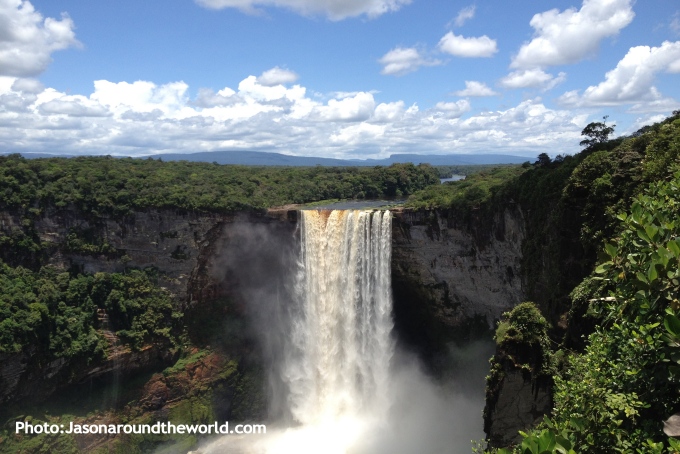About Guyana
/ As usual, we've done our homework in advance and have some feel for what to expect when we arrive in Guyana. We're kind of excited about the trip; it's the only country in South America we haven't visited and it'll be a good tick on our bucket list. Guyana is a small country, a bit larger than the state of New York. Formerly British Guiana, it became independent from Great Britain in 1966. It's proper name is the Co-operative Republic of Guyana. Nestled between Venezuela to the west and Suriname to the east, it borders Brazil to the south and the Atlantic sweeps its shore on the north.
As usual, we've done our homework in advance and have some feel for what to expect when we arrive in Guyana. We're kind of excited about the trip; it's the only country in South America we haven't visited and it'll be a good tick on our bucket list. Guyana is a small country, a bit larger than the state of New York. Formerly British Guiana, it became independent from Great Britain in 1966. It's proper name is the Co-operative Republic of Guyana. Nestled between Venezuela to the west and Suriname to the east, it borders Brazil to the south and the Atlantic sweeps its shore on the north.
Guyana is an Amerindian word translating to "land of many waters." It has a huge network of rivers, the three largest of which are the Demerara, the Berbice and the Essequibo. It's the Essequibo, Guyana's longest river, that we'll tackle. From what we've read, the climate is pretty much identical to that of French Guiana and Suriname … hot and steamy this time of year with frequent showers. Like the other Guianas, Guyana is more Caribbean in culture than South American. We aim to find out.
Lonely Planet provided a list of Guyana's key attractions. Kaieteur Falls tops the list. LP describes it this way … “Watching 30,000 gallons of water per second be shot out over a 250m (820ft) cliff in the middle of a misty, ancient jungle without another tourist in sight is a once-in-a-lifetime experience.” Something we'd love to do. We'll see how it works out.
The Guyanese currency is the Guyanese dollar (GYD – G$). The exchange rate today is about US$1=G$200 which means we'll be doing higher math to figure out our true cost of things.
A little Guyana trivia for you …
Guyana is the only country in South America with English as its official language although Creole, Hindi, Urdu and several AmerIndian dialects are frequently spoken.
Guyana is probably best remembered as the site of the mass suicide at Jonestown in 1978. Jim Jones, the leader of the People's Temple Movement, convinced 900 of his followers that it was “time ... to meet in another place”. They all drank cyanide-laced red Kool-aid and were dead within an hour.
Georgetown, Guayana's capital and only large city, lies 13 feet below sea level at high tide. A sea wall and an early Dutch canal system keeps the town from flooding and provides drainage.
Demerara sugar, a brown, raw cane sugar, gets its name from the Demerara River in Guyana. The Guyanese sugar industry, with a 300-year old history, is nationally controlled (Guysuco) and huge. Logging and mining (gold and bauxite) are also important contributors to Guyana's economy.
The Guyanese national flag is called “the Golden Arrowhead”. Whitney Smith, an American, is credited with the design. Our friend Doris in Namibia made ours for us and we'll have the chance to use it now.
Guyana's first Olympic medal was won by Michael Parris who got a bronze for boxing in 1980. Cricket is a national sport, introduced by the British and played religiously.
We're looking forward to our time here. We hope you plan to come along.





